Opinion & Analysis
A pair of Japanese stars emerge on the PGA Tour: Which one will shine brighter?
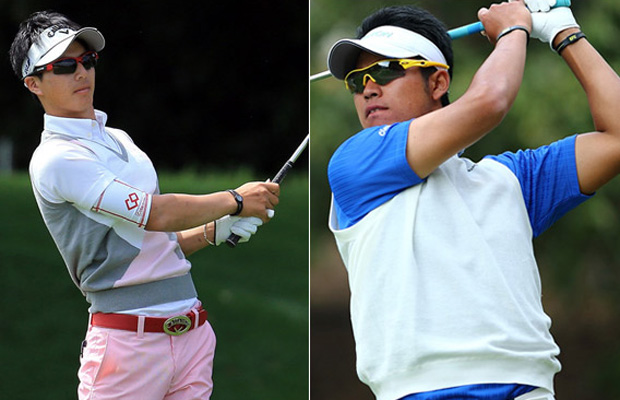
The number of Asian golfers who have played on PGA Tour are few. Of those, the ones who have achieved significant fame are even fewer. With Hideki Matsuyama and Ryo Ishikawa playing concurrent schedules in the U.S., Japan has delivered a pair of young, marketable talents with global appeal. Given the success they’ve had barely into their 20s, it’s natural to speculate on how far can they go and who will go the farthest.
Based on early returns, Matsuyama, 21, is more likely to capitalize on his initial success and could earn his first win on Tour in the 2013-2014 wrap-around season. He began the year ranked No. 128 in the world, but he is now comfortably inside the top 30. Discounting his lone missed cut at the Sony Open in Hawaii in January, Matsuyama’s worst finish on Tour was a tie for 21st at the WGC-Bridgestone Invitational in early August. His consistently strong play carried over into the majors, especially at The Open Championship, where his late-Sunday charge at eventual winner Phil Mickelson raised everyone’s expectations. It also earned him a spot at the Presidents Cup, where just two years ago Ishikawa was making his second-consecutive appearance.
Ishikawa’s professional career has been following a trajectory that should have led to a third Presidents Cup trip this past season. Golf fans have been hearing a lot about his potential for what seems like a long time. Still just 22 years old, he’s been the acclaimed “can’t-miss kid” since his junior days. Back home, Ishikawa has been compared to Tiger Woods — and Brad Pitt — which should give you some idea of his cultural transcendence.
“He came into the sport young and naïve at a time when Japan’s golf industry was lagging behind the world in popularity,” said Dennis Allen, SVP of global business development at the Back9Network. “The LPGA of Japan was more popular than the Japan Golf Tour. And Koreans were beginning to make themselves known on the global stage. He brought a new personality and energy to the sport in Japan.”
Ishikawa didn’t so much step foot into his fame as barrel into it. He won in his first start on the Japan Golf Tour as a 15-year-old amateur in 2007. The following year, he won another event and became the youngest player to reach the top 100 of the Official World Golf Ranking. He followed up his success by winning the tour’s order of merit in 2009 and famously carded a 58 to win The Crowns a year later, the lowest round ever recorded on any major tour.
Ishikawa’s best moments, while notable, have occurred almost entirely on home soil. On the PGA Tour, his record has been equal parts hit and miss. Most American golf fans know of him primarily through his appearances in The Masters, which have all come by way of special invitation and have been negatively received by some critics. Ishikawa himself told reporters earlier this year that he was surprised to have gotten a fifth consecutive invite considering his extensive slide in the world ranking. Like his four previous trips to Augusta, Ishikawa was unable to make a compelling argument that he deserved a spot in the field on merit alone. Perhaps it’s a by-product of trying too hard; very few golfers have been under more media scrutiny or have had to single-handedly carry the torch for their country.
That Ishikawa’s star power has diminished at all is probably a welcome respite. Scenes like the one that happened at his PGA Tour debut at Riviera Country Club, where a mob of Japanese reporters overwhelmed the media center and snapped photos of a television showing Ishikawa being interviewed by an American sports network, reveals much about Japan’s insatiable appetite for all things Ryo.
Andy Yamanaka, an official with the Japan Golf Tour, described Ishikawa as being a near singular influence for generating interest in golf.
“Ryo is the complete package,” Yamanaka said in a 2010 interview. “I’m not sure if it was the same situation with Tiger Woods in the U.S. when he was younger, but I’ve never seen anyone like Ryo in terms of his potential as an international athlete.”
Matsuyama, only a year younger than Ishikawa, hasn’t had to deal with the same media obligations or scrutiny by virtue of his more conventional path through the amateur ranks. A collegiate player at Tohoku Fukushi University in Sendai, the golf world first took notice of Matsuyama in 2010 when his victory at the Asia-Pacific Amateur Championship earned him an automatic invite to The Masters. He was the first Japanese amateur to compete at Augusta, and he took low-am honors that year. He followed that up by successfully defending his Asia-Pacific crown, but was unable to overtake 20-year-old Patrick Cantlay to repeat as low amateur champion.
Beyond that, there was a spell of almost two years where very little else was reported other than his win at the Japan Collegiate Championship in 2012 or his ascension to the top of the World Amateur Golf Ranking — both quality achievements.
But that was then. To say that Matsuyama’s last 10 months have been good would be devastatingly modest.
“His ascent to the top has been meteoric by any standard,” Allen said. “No one saw this coming.”
Within the past year and a half, Matsuyama has vaulted up the rankings, going from 210th in the world to 29th. He also bagged three wins in Japan to go along with his stellar play on the PGA Tour.
For Japanese reporters, Matsuyama was clearly the main draw at the Frys.com Open where he finished tied for third. Playing 40 minutes apart during the opening round, two-thirds of the Japanese media had left Ishikawa to follow Matsuyama by the time his fellow countryman arrived to the first tee.
“Until last year, there was just one player for Japanese media to cover. Now we have two,” Sonoko Funakoshi, a writer for Jiji press, said in an interview. “Results wise, Matsuyama has performed better [recently] so he is getting more exposure. If the results change, then Ishikawa will receive more attention.”
What the Japanese have, much to their glee, is a pretty darn good rivalry that doesn’t need help in the form of a media pep rally to sell it. Matsuyama, who just turned pro this past year, has been seemingly unfazed by his new-found stardom and the expectations that come with it.
Whether it’s representing his country at the Presidents Cup or having to be paired with Tiger Woods at Firestone, who was making a run at shooting 59, Matsuyama exudes poise. He has a swing that matches his personality — smooth and calm, with a slight pause at the top as if to say, what’s the hurry.
At 5-foot-11 and 180 pounds, Matsuyama can fill out a golf shirt. His broad, athletic physique is consistent with today’s modern golfer, but he’s not a bomber off the tee. By comparison, the straw-thin Ishikawa actually gets a few extra yards off the tee with his lower, more piercing ball flight.
The key to Matsuyama’s game is accuracy, not distance. Put an iron or wedge in his hand and he turns golf into a game of darts. He ranked No. 1 on the PGA Tour in approach distance from 50 to 125 yards, and was inside the top 10 in four other distance stats. He also led the Tour in GIR percentage in three separate categories. His game is remarkably similar to that of Henrik Stenson, who like Matsuyama, is an average, but streaky putter and who leans on phenomenal ball striking to set up good scoring chances.
Statistics also tell us that Matsuyama’s a closer. His 68.33 final-round scoring average ranked second on Tour and was two strokes lower than his pre-cut average. As for Ishikawa, his final-round average of 72.25 (71.64 overall) reflected the struggles he went through in his first full season on the PGA Tour.
Ishikawa’s disappointing 2013 season can be summed up this way — expectations, both from Ryo and new equipment sponsor Callaway, were higher.
Shoji Akihisa, vice president of sales and marketing for Callaway’s Japan division, said Ishikawa has had trouble adapting to course conditions in the United States.
“He has struggled mainly with adjusting to different grass surfaces and course layouts and it has affected his short game and putting,” Akihisa said. “It takes time to make those adjustments and there’s a learning curve.”
Ishikawa’s 53.27 percentage in scrambling was 160th on Tour and in another key statistic, strokes gained putting, he ranked even lower. Highlights for the Japanese star were few; he recorded a single top-10 finish in 23 starts and failed to earn enough money to remain fully exempt on Tour.
His detractors are quick to point out that the accolades he’s received in his young career have exceeded the results. It’s also been perceived that Ishikawa, who has been worshipped like a rock star in Japan since his teenage years, is unaccustomed to dealing with hardship.
It’s easy for critics to slap a label based on the results of his scorecards; they don’t see the sweat equity. They don’t see Ishikawa, who bought a home in San Diego in the offseason, grinding at the Ely Callaway Performance Center on his off weeks.
“We have a driving range down there and in indoor putting lab,” said Scott Goryl, senior manager of global communications at Callaway. “It was originally built as an extension of our R&D facility at headquarters. Ryo bought a house nearby and accesses it whenever he likes to practice. Phil Mickelson does this as well. He lives 15 minutes away and he comes in quite a bit to tweak his clubs and try out new products.”
Ishikawa told reporters back in March that “Japanese people are watching me all the time.”
“The biggest thing this year is to keep my Tour card,” he said. “They want me to be a Tour player next year.”
Ishikawa’s demanding 2013 schedule included 24 tournaments. It would’ve been exceedingly easy for him to rest up the remainder of the year and bank on his name and global appeal to cobble together a 2014 schedule heavy on sponsor exemptions. Instead, a humbled Ishikawa made it a point to regain his Tour card, competing in the Web.com Tour playoffs where he finished comfortably inside the top 25. His success in the playoffs has carried over into the new season where he’s earned more money in two starts than all of last season combined. And it has people talking about his play, rather than his much-ballyhooed contract with Callaway signed at the start of the year.
Ishikawa had been on Callaway’s radar since he was a promising junior using one of its Odyssey putters. When his long-term arrangement with Yonex expired, Ishikawa had a number of suitors that reportedly included Srixon and Nike. Yonex, of course, held an advantage over everyone, based on Ishikawa’s familiarity with them. But Callaway was persistent, at one point even sending out Allan Hocknell, senior vice president of research and development, and chief club designer Roger Cleveland to a remote course north of Tokyo to play nine holes with Ishikawa and talk shop.
When negotiations concluded, Ishikawa scored a record multi-year deal worth an estimated 600 million yen ($6.8 million) per year, easily eclipsing Ishikawa’s five-year commitment to Yonex that was worth one billion yen during the life of the contract.
For Callaway, the Ishikawa signing was part of a multi-pronged strategy to reinvigorate the brand with younger, hipper talent and to increase its leverage in Asia.
“They are going through a complete revamp of their business model and brand; it’s part of a broader global strategy,” said the Back9Network’s Allen. “They needed new blood to attract different demographics. And one country that they had always done well in over the past two decades was Japan. So it’s not surprising that they picked a young, vibrant, Japanese pro to be their poster boy.”
Japan, which has 2,350 golf courses and close to 9 million active golfers, is the second-largest market after the U.S. for demand. According to Callaway’s Akihisa, the signing of Ishikawa is all about increasing momentum, both in Japan, as well as in China and Korea. In terms of dividends, Callaway’s 2013 first quarter net sales in Japan were up 4 percent over a year ago and were even higher for the rest of Asia (12 percent).
Ishikawa’s equipment contract with Callaway naturally includes apparel, hats, gloves and footwear. His global ambassadorship and distinct sense of style is in itself a marketable attribute that Callaway has leveraged for its premium apparel line that is distributed by Sanei, a licensing partner it has worked with since 2002.
Working with Ishikawa since last October, Callaway and Sanei have fashioned a look that is distinctly vibrant, youthful and brash — qualities Callaway hasn’t been traditionally known for, especially in the United States.
“In Japan, we have a different approach in terms of apparel,” Akihisa said. “It’s a different style and a different price point than what we offer in the U.S.”
To help Ishikawa with his daily itinerary on Tour, Callaway appointed Kenji Shimada to travel with him. Shimada is responsible for fine tuning his equipment, coordinating his outfits, supervising photo shoots and pretty much anything else that might come up. Normally, an agent might handle some of these responsibilities, but certainly not a rep from an equipment manufacturer.
“It’s a unique situation in that there’s somebody traveling with Ryo on the PGA Tour this year to make sure his equipment is dialed in,” Goryl said. “And there’s a practice facility available to him near his home in Southern California. That is all new. I wouldn’t call it an experiment necessarily, but this is uncharted territory for us. It’s probably too early to tell if this turns into a blueprint [for how other signees are treated], but we’re definitely looking for young, talented players with global appeal.”
Callaway’s relationship with Ishikawa is unprecedented, some would even call it extravagant. But it could signal a trend in the industry as equipment companies seek to lock up deals with the next wave of talent hailing from Asia.
“These guys are heroes in their own countries regardless of what they do on the global stage, so the contracts are paid for by sales increases in Japan and China alone,” Allen said.
The best thing to happen to Ishikawa, who has yet to break through and win on the PGA Tour, could be Matsuyama and vice versa. Both players will push each other; it’s a case of pride — both personal and national. It’s good to see a chafed Ishikawa follow up Matsuyama’s strong performance at the Frys.com Open by tying his own career-best finish at the Shriners Hospital for Children Open in Las Vegas just a week later. He’s going to have to demonstrate some consistently strong play during the coming season if he wants to argue his case for being the best young Asian player on Tour. For now, it appears that Matsuyama has a lock on that title.
It will be exciting to watch how their careers unfold during the next decade and measure the influence they’ll have on the next generation of Asian golfers. Consider the impact Se Ri Pak had in South Korea after winning the LPGA Championship as a 22-year-old in 1998. Pak was the lone Korean player on tour at the time. By 2009, there were 47 players who collectively won more than one-third of the events. On the PGA Tour, veteran K.J. Choi ended up paving the way for Y.E. Yang, Seung-yul Noh and Sang-Moon Bae.
What will the Tour look like in another 10 years? Don’t be surprised if Matsuyama and Ishikawa provide those answers.
Opinion & Analysis
The 2 primary challenges golf equipment companies face

As the editor-in-chief of this website and an observer of the GolfWRX forums and other online golf equipment discourse for over a decade, I’m pretty well attuned to the grunts and grumbles of a significant portion of the golf equipment purchasing spectrum. And before you accuse me of lording above all in some digital ivory tower, I’d like to offer that I worked at golf courses (public and private) for years prior to picking up my pen, so I’m well-versed in the non-degenerate golf equipment consumers out there. I touched (green)grass (retail)!
Complaints about the ills of and related to the OEMs usually follow some version of: Product cycles are too short for real innovation, tour equipment isn’t the same as retail (which is largely not true, by the way), too much is invested in marketing and not enough in R&D, top staffer X hasn’t even put the new driver in play, so it’s obviously not superior to the previous generation, prices are too high, and on and on.
Without digging into the merits of any of these claims, which I believe are mostly red herrings, I’d like to bring into view of our rangefinder what I believe to be the two primary difficulties golf equipment companies face.
One: As Terry Koehler, back when he was the CEO of Ben Hogan, told me at the time of the Ft Worth irons launch, if you can’t regularly hit the golf ball in a coin-sized area in the middle of the face, there’s not a ton that iron technology can do for you. Now, this is less true now with respect to irons than when he said it, and is less and less true by degrees as the clubs get larger (utilities, fairways, hybrids, drivers), but there remains a great deal of golf equipment truth in that statement. Think about it — which is to say, in TL;DR fashion, get lessons from a qualified instructor who will teach you about the fundamentals of repeatable impact and how the golf swing works, not just offer band-aid fixes. If you can’t repeatably deliver the golf club to the golf ball in something resembling the manner it was designed for, how can you expect to be getting the most out of the club — put another way, the maximum value from your investment?
Similarly, game improvement equipment can only improve your game if you game it. In other words, get fit for the clubs you ought to be playing rather than filling the bag with the ones you wish you could hit or used to be able to hit. Of course, don’t do this if you don’t care about performance and just want to hit a forged blade while playing off an 18 handicap. That’s absolutely fine. There were plenty of members in clubs back in the day playing Hogan Apex or Mizuno MP-32 irons who had no business doing so from a ballstriking standpoint, but they enjoyed their look, feel, and complementary qualities to their Gatsby hats and cashmere sweaters. Do what brings you a measure of joy in this maddening game.
Now, the second issue. This is not a plea for non-conforming equipment; rather, it is a statement of fact. USGA/R&A limits on every facet of golf equipment are detrimental to golf equipment manufacturers. Sure, you know this, but do you think about it as it applies to almost every element of equipment? A 500cc driver would be inherently more forgiving than a 460cc, as one with a COR measurement in excess of 0.83. 50-inch shafts. Box grooves. And on and on.
Would fewer regulations be objectively bad for the game? Would this erode its soul? Fortunately, that’s beside the point of this exercise, which is merely to point out the facts. The fact, in this case, is that equipment restrictions and regulations are the slaughterbench of an abundance of innovation in the golf equipment space. Is this for the best? Well, now I’ve asked the question twice and might as well give a partial response, I guess my answer to that would be, “It depends on what type of golf you’re playing and who you’re playing it with.”
For my part, I don’t mind embarrassing myself with vintage blades and persimmons chasing after the quasi-spiritual elevation of a well-struck shot, but that’s just me. Plenty of folks don’t give a damn if their grooves are conforming. Plenty of folks think the folks in Liberty Corner ought to add a prison to the museum for such offences. And those are just a few of the considerations for the amateur game — which doesn’t get inside the gallery ropes of the pro game…
Different strokes in the game of golf, in my humble opinion.
Anyway, I believe equipment company engineers are genuinely trying to build better equipment year over year. The marketing departments are trying to find ways to make this equipment appeal to the broadest segment of the golf market possible. All of this against (1) the backdrop of — at least for now — firm product cycles. And golfers who, with their ~15 average handicap (men), for the most part, are not striping the golf ball like Tiger in his prime and seem to have less and less time year over year to practice and improve. (2) Regulations that massively restrict what they’re able to do…
That’s the landscape as I see it and the real headwinds for golf equipment companies. No doubt, there’s more I haven’t considered, but I think the previous is a better — and better faith — point of departure when formulating any serious commentary on the golf equipment world than some of the more cynical and conspiratorial takes I hear.
Agree? Disagree? Think I’m worthy of an Adam Hadwin-esque security guard tackle? Let me know in the comments.
@golfoncbs The infamous Adam Hadwin tackle ? #golf #fyp #canada #pgatour #adamhadwin ? Ghibli-style nostalgic waltz – MaSssuguMusic
Podcasts
Fore Love of Golf: Introducing a new club concept

Episode #16 brings us Cliff McKinney. Cliff is the founder of Old Charlie Golf Club, a new club, and concept, to be built in the Florida panhandle. The model is quite interesting and aims to make great, private golf more affordable. We hope you enjoy the show!
Opinion & Analysis
On Scottie Scheffler wondering ‘What’s the point of winning?’

Last week, I came across a reel from BBC Sport on Instagram featuring Scottie Scheffler speaking to the media ahead of The Open at Royal Portrush. In it, he shared that he often wonders what the point is of wanting to win tournaments so badly — especially when he knows, deep down, that it doesn’t lead to a truly fulfilling life.
View this post on Instagram
“Is it great to be able to win tournaments and to accomplish the things I have in the game of golf? Yeah, it brings tears to my eyes just to think about it because I’ve literally worked my entire life to be good at this sport,” Scheffler said. “To have that kind of sense of accomplishment, I think, is a pretty cool feeling. To get to live out your dreams is very special, but at the end of the day, I’m not out here to inspire the next generation of golfers. I’m not out here to inspire someone to be the best player in the world, because what’s the point?”
Ironically — or perhaps perfectly — he went on to win the claret jug.
That question — what’s the point of winning? — cuts straight to the heart of the human journey.
As someone who’s spent over two decades in the trenches of professional golf, and in deep study of the mental, emotional, and spiritual dimensions of the game, I see Scottie’s inner conflict as a sign of soul evolution in motion.
I came to golf late. I wasn’t a junior standout or college All-American. At 27, I left a steady corporate job to see if I could be on the PGA Tour starting as a 14-handicap, average-length hitter. Over the years, my journey has been defined less by trophies and more by the relentless effort to navigate the deeply inequitable and gated system of professional golf — an effort that ultimately turned inward and helped me evolve as both a golfer and a person.
One perspective that helped me make sense of this inner dissonance around competition and our culture’s tendency to overvalue winning is the idea of soul evolution.
The University of Virginia’s Division of Perceptual Studies has done extensive research on reincarnation, and Netflix’s Surviving Death (Episode 6) explores the topic, too. Whether you take it literally or metaphorically, the idea that we’re on a long arc of growth — from beginner to sage elder — offers a profound perspective.
If you accept the premise literally, then terms like “young soul” and “old soul” start to hold meaning. However, even if we set the word “soul” aside, it’s easy to see that different levels of life experience produce different worldviews.
Newer souls — or people in earlier stages of their development — may be curious and kind but still lack discernment or depth. There is a naivety, and they don’t yet question as deeply, tending to see things in black and white, partly because certainty feels safer than confronting the unknown.
As we gain more experience, we begin to experiment. We test limits. We chase extreme external goals — sometimes at the expense of health, relationships, or inner peace — still operating from hunger, ambition, and the fragility of the ego.
It’s a necessary stage, but often a turbulent and unfulfilling one.
David Duval fell off the map after reaching World No. 1. Bubba Watson had his own “Is this it?” moment with his caddie, Ted Scott, after winning the Masters.
In Aaron Rodgers: Enigma, reflecting on his 2011 Super Bowl win, Rodgers said:
“Now I’ve accomplished the only thing that I really, really wanted to do in my life. Now what? I was like, ‘Did I aim at the wrong thing? Did I spend too much time thinking about stuff that ultimately doesn’t give you true happiness?’”
Jim Carrey once said, “I think everybody should get rich and famous and do everything they ever dreamed of so they can see that it’s not the answer.”
Eventually, though, something shifts.
We begin to see in shades of gray. Winning, dominating, accumulating—these pursuits lose their shine. The rewards feel more fleeting. Living in a constant state of fight-or-flight makes us feel alive, yes, but not happy and joyful.
Compassion begins to replace ambition. Love, presence, and gratitude become more fulfilling than status, profits, or trophies. We crave balance over burnout. Collaboration over competition. Meaning over metrics.
Interestingly, if we zoom out, we can apply this same model to nations and cultures. Countries, like people, have a collective “soul stage” made up of the individuals within them.
Take the United States, for example. I’d place it as a mid-level soul: highly competitive and deeply driven, but still learning emotional maturity. Still uncomfortable with nuance. Still believing that more is always better. Despite its global wins, the U.S. currently ranks just 23rd in happiness (as of 2025). You might liken it to a gifted teenager—bold, eager, and ambitious, but angsty and still figuring out how to live well and in balance. As much as a parent wants to protect their child, sometimes the child has to make their own mistakes to truly grow.
So when Scottie Scheffler wonders what the point of winning is, I don’t see someone losing strength.
I see someone evolving.
He’s beginning to look beyond the leaderboard. Beyond metrics of success that carry a lower vibration. And yet, in a poetic twist, Scheffler did go on to win The Open. But that only reinforces the point: even at the pinnacle, the question remains. And if more of us in the golf and sports world — and in U.S. culture at large — started asking similar questions, we might discover that the more meaningful trophy isn’t about accumulating or beating others at all costs.
It’s about awakening and evolving to something more than winning could ever promise.





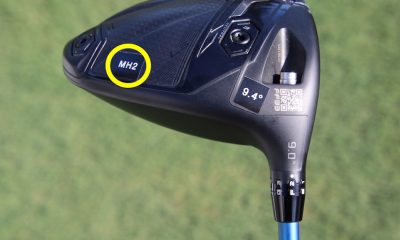

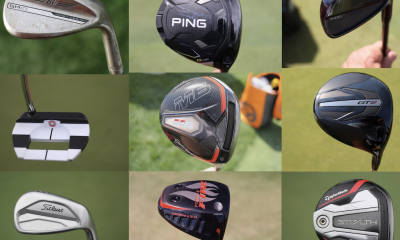

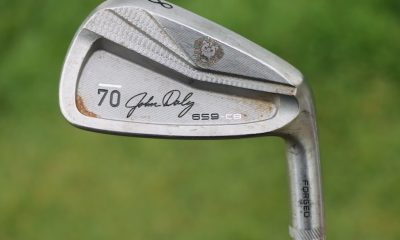





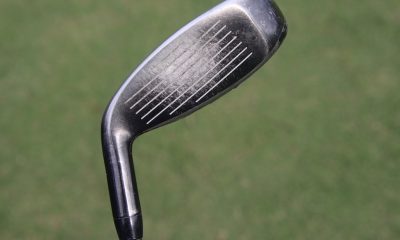









Robert
Dec 10, 2013 at 8:50 am
Working here in Tokyo in the media,I can say Ishikawa is NOT the rock star the media makes him out to be at all.Most younger Japanese have little knowledge of him or golf.Basically he was a created idol.Not to doubt his ability though on Japanese courses,but the lack of competition here made him a flat track bully.He’s very introverted and not the ‘Brad Pitt ‘ the Japanese media want him to be.I wish they would give him a break.
Rusty Cage
Nov 8, 2013 at 8:19 pm
It was interesting listening in on some of the banter between Ryo and his caddie at the Shriners. Clearly he doesn’t need an interpreter anymore.
Scott
Nov 8, 2013 at 6:22 pm
Best thing to happen to Ryo is his new caddy! Simon Clarke from Melbourne. Simon is one of the worlds best caddies.
tyler
Nov 8, 2013 at 1:54 pm
Ryo has game but is overrated IMO. His flamboyance makes him appealing but he really hasn’t done anything in the States. Callaway pretty much rolled out the red carpet for him and I guess I can understand why.